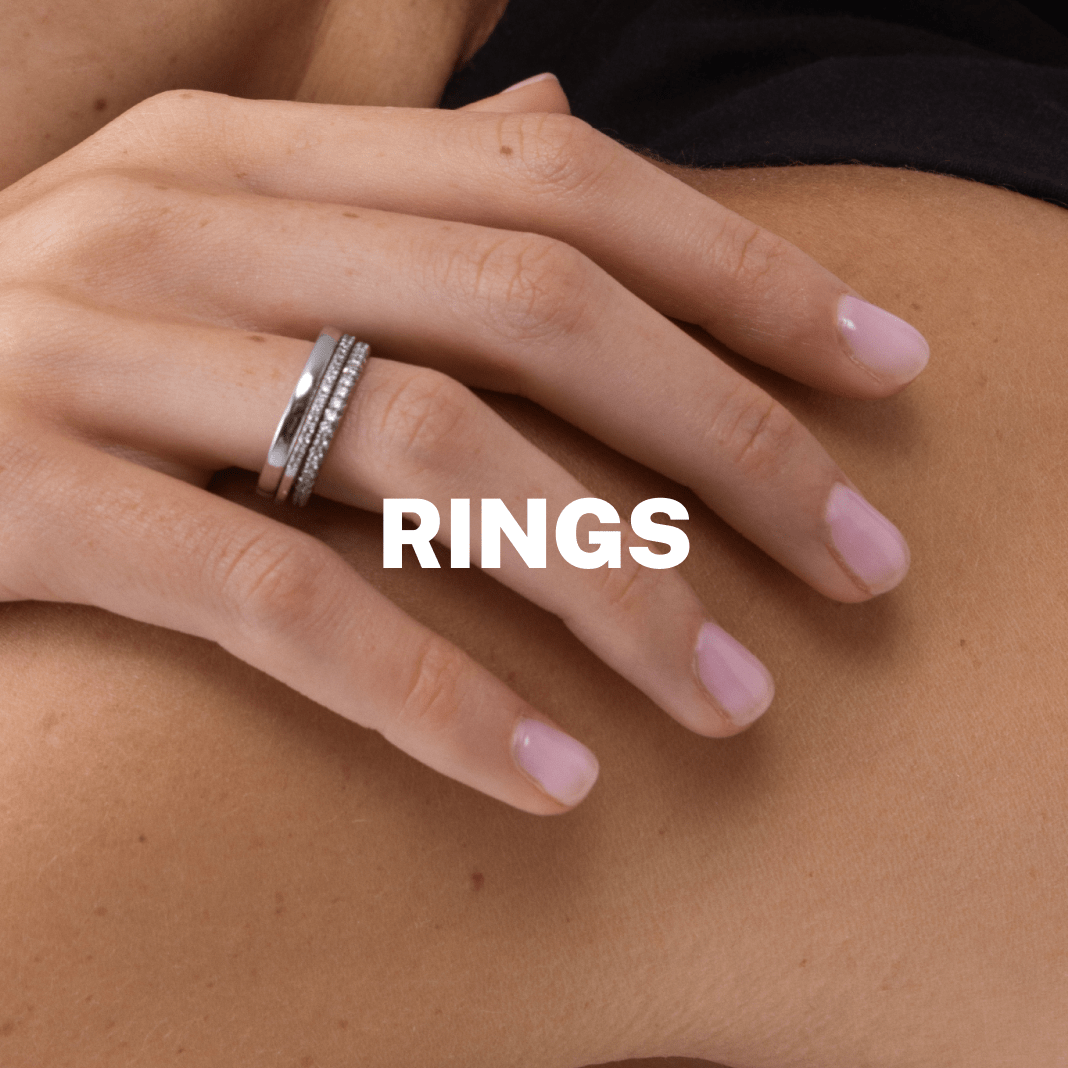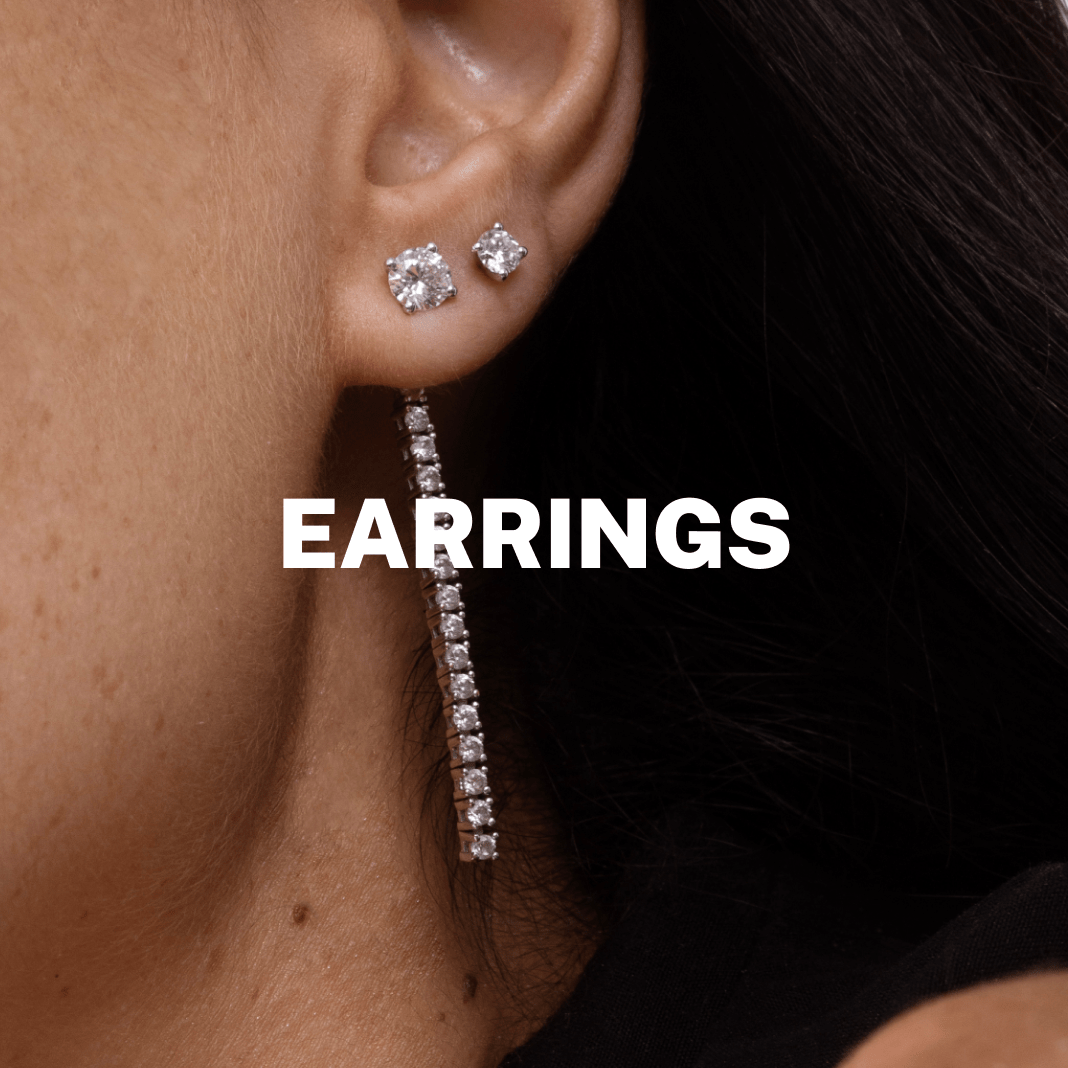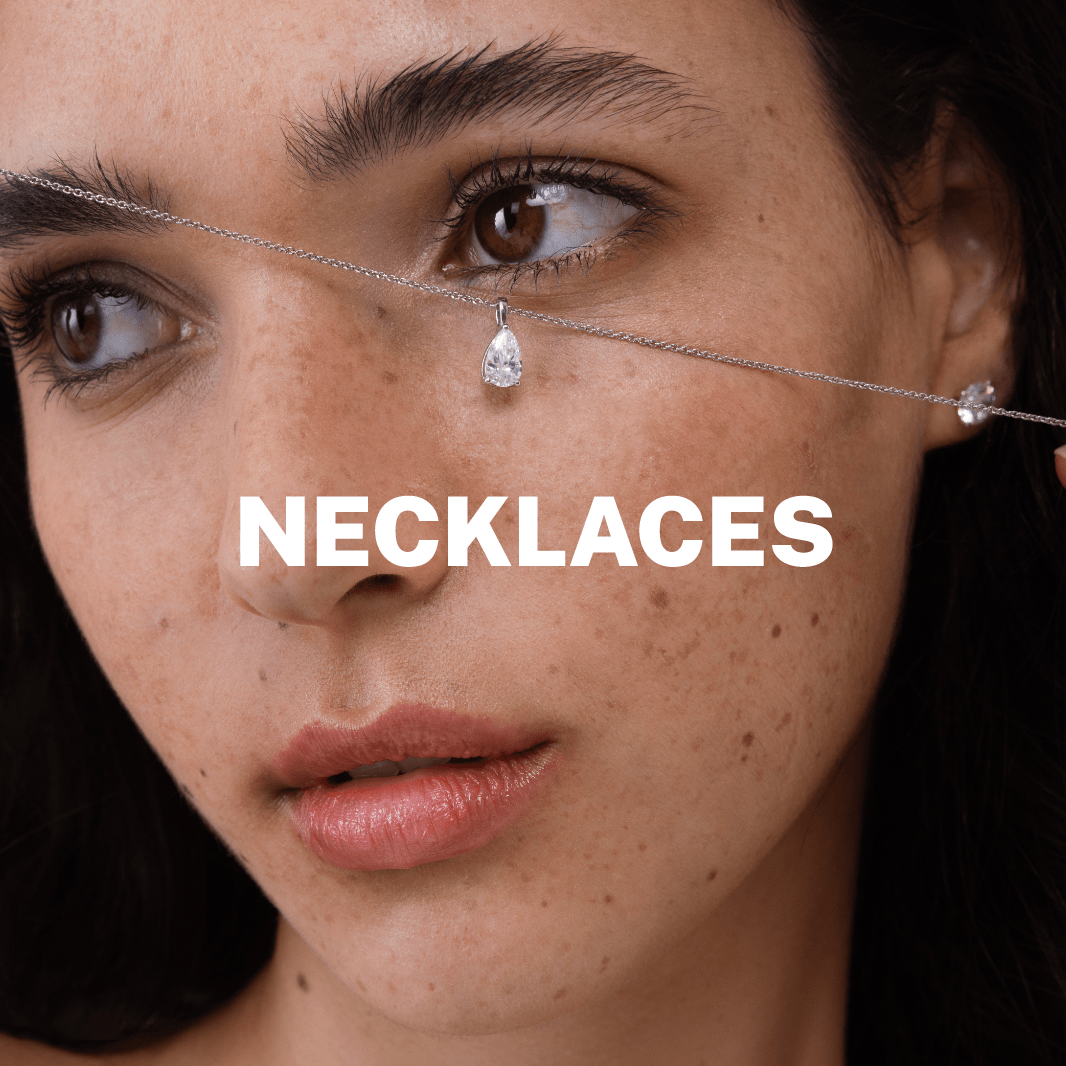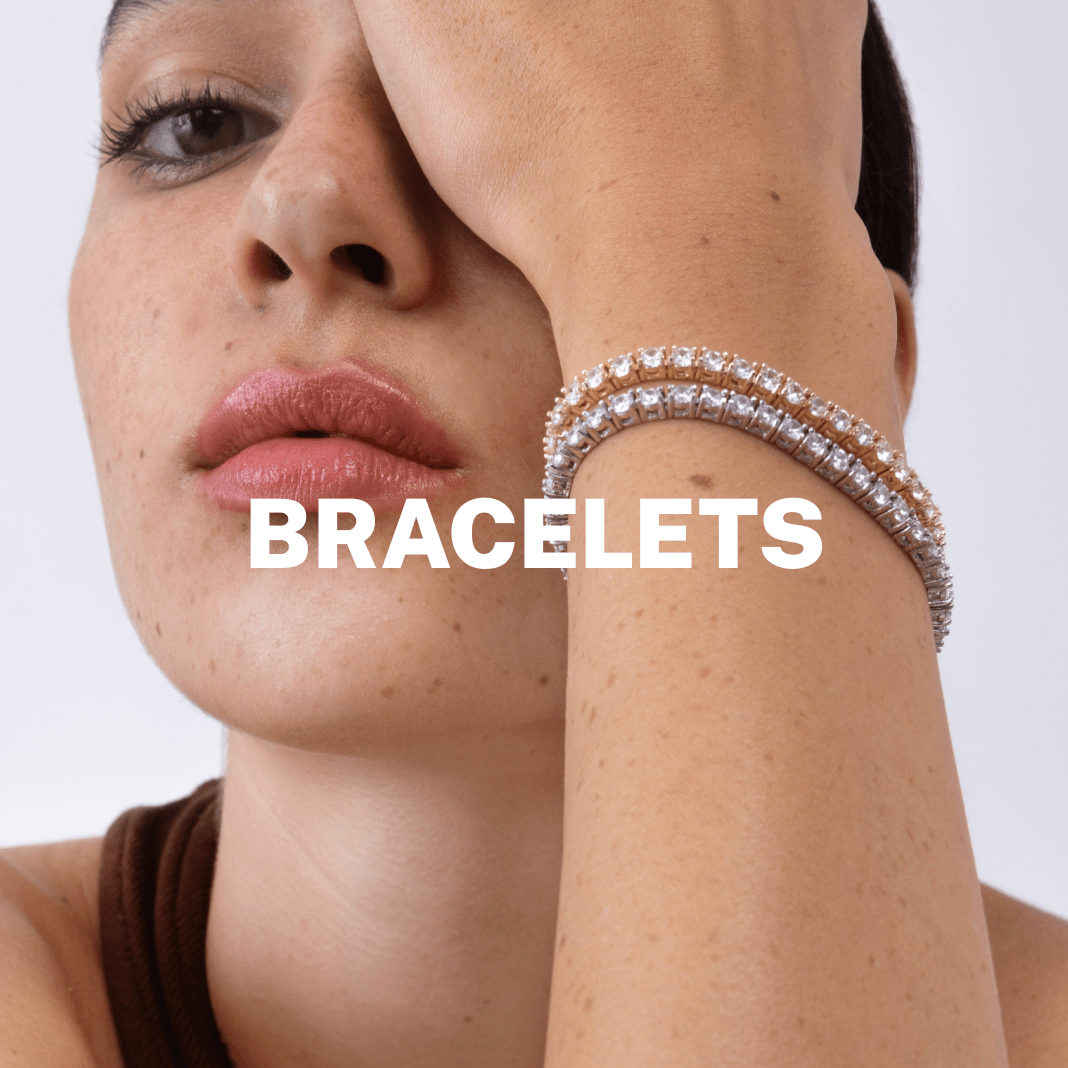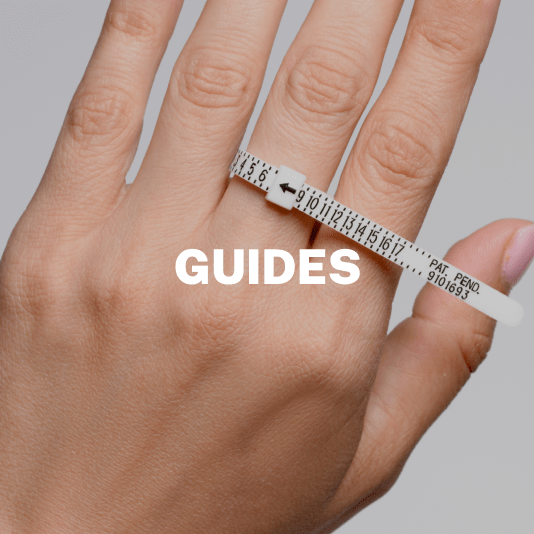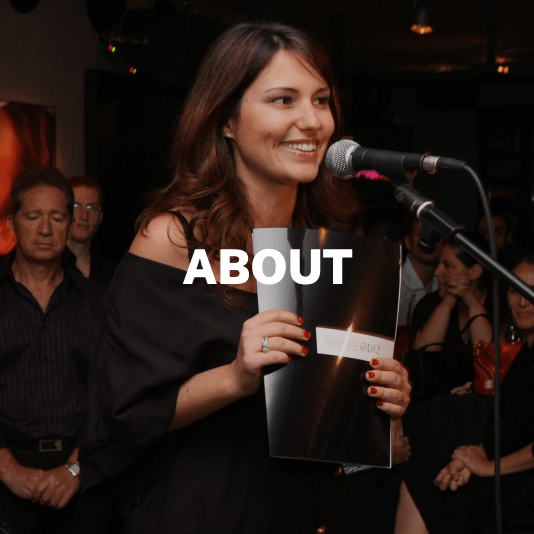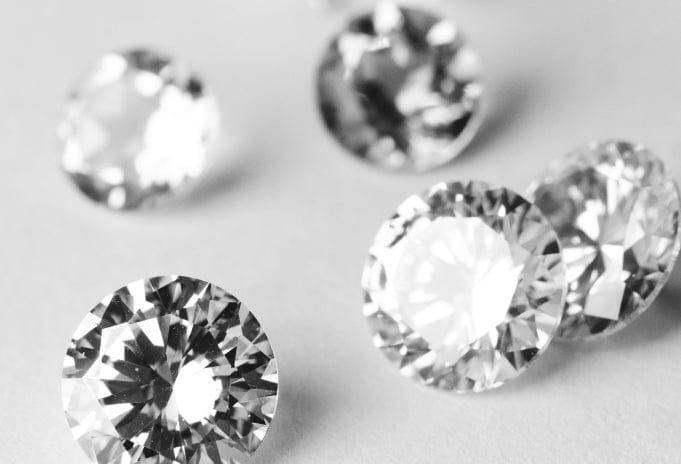
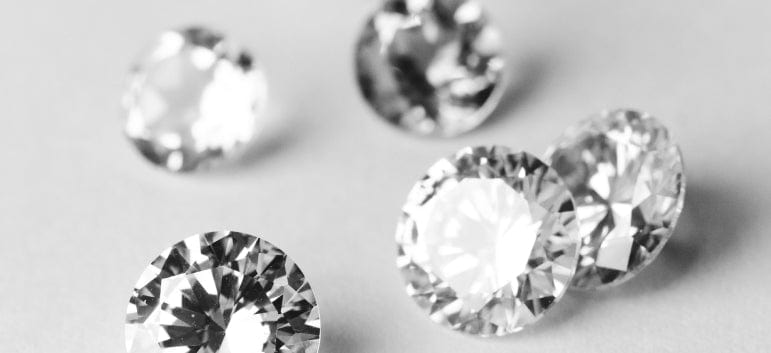
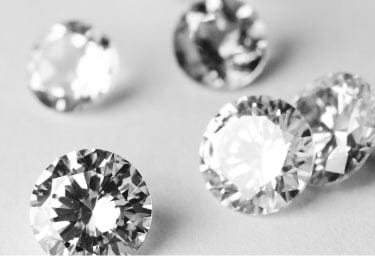
Diamond Shape
Diamond Cuts & Shapes
When looking for an engagement ring, you’ll particularly want to consider the different types of diamond cuts available. Despite not being one of the key 4 C’s of diamond quality, the diamond shape will have the most influence on the style of your ring.
More correctly labeled as diamond shapes, so as not to be confused with the diamond cut scale which measures how well a diamond has been cut as opposed to the way the stone is cut into different diamond shapes.
Diamond cut affects style, carat size and brilliance!
This guide will help you discover how to get the right diamond shape for you.
Our must read tips on how the diamond shape impacts the visual or 'face up' size of your diamond. Check our our carat weight chart and guide and consider the impact on size and cost together when choosing your diamond shape.

Round Brilliant
Round diamonds offer the perfect balance between size, brilliance and versatility, while being a ‘safe’ choice when choosing for your partner.
Aim for at least ‘Very Good’ cut, polish and symmetry grades to ensure a high brilliance diamond.

Emerald
Emerald shaped diamonds are elongated straight edged diamonds with cut corners and a ‘step’ cut. The step cut means there are fewer but larger facets that act as mirrors for reflecting light.
Emerald cuts should be purchased with high clarity to ensure they are eye clean. The recommended choice of diamond color grade will depend on the jewelry metal.

Cushion
There are many ways to cut a cushion cut diamond and the facets may appear similar to a brilliant cut round, have a vintage ‘old mine’ look or an appearance of crushed ice. Seeing the exact stone before buying is recommended.

Oval
Ovals are simply an elongated version of the round brilliant cut. High brilliance, rounded edges but with a subtle twist. Oval cuts are one of the more popular of the fancy shapes with the ideal combination of price, size and brilliance, together with the soft rounded edges.
Oval cut diamonds are also an excellent choice for elongating the appearance of the finger.

Marquise
Marquise cut diamonds have the largest surface area per carat and offer excellent value for money in that respect as you can opt for a lower carat weight and save, compared to other shapes.
They’re considered a more vintage or alternative choice of diamond shape.

Pear
Pear shaped diamonds, also known as teardrop diamonds have a rounded edge on one side and a point at the other. Similar to ovals these too are excellent for accentuating the slender appearance of fingers when worn.
Lower colored pears (J-K) are less recommended as the color tint can concentrate in the narrow area of the stone.

Heart
For the diehard romantics, there’s nothing that beats the heart shape. Hearts, however, aren’t the most popular engagement ring styles and so design options are relatively limited when compared to some of the different diamond cuts.

Square Princess
To get a square diamond, you'll want to look for a width-length ratio of 1-1.05. Princess cut diamonds are not graded for cut by the GIA as there are no 'ideal' measurements, but do have a polish and symmetry grading.
Aim to avoid very deep cut princess cuts as your diamond will appear significantly smaller.
Other Diamond Shapes Include...

While our currently collections don't include these shapes, we do love them! Each one has its unique character and style and we hope to play with these in the future.
Radiants are very similar in shape to emeralds, but are brilliant cuts. They therefore have more facets and more sparkle to them. Radiants come in elongated and square radiant form. With radiant cut diamonds you can comfortably purchase SI quality for an eye clean stone.
Asscher cut diamonds are equal ratio square shaped emerald cuts. They too have a step cut and should be carefully selected with high clarity. While a typically sophisticated choice, asscher cuts do appear smaller than other shapes with the same carat weight.
Baguettes are rectangular cut diamonds, usually made in smaller sizes that are rarely set as the centerpiece. Baguettes look very similar to step cut emeralds but without the cut corners. The length width ratio has the most significant effect on the appearance and price of baguette cut diamonds.
Trillion diamonds are triangles that typically are cut with slightly rounded edges for a more appealing aesthetic. These too are relatively uncommon and supply of both diamonds and designs is limited.


Diamond Shape FAQs
What is the most popular diamond shape?
Round diamonds reign supreme when it comes to popularity. Their enduring charm, design flexibility, and unparalleled brilliance make them a go-to choice that never goes out of style. While trends come and go, pears, ovals, emerald, and cushion cuts are currently the runners-up in terms of preference.
Does the shape affect the diamond's appeal?
The shape of a diamond is largely a matter of personal taste, but round diamonds do offer a unique combination of generous face size, remarkable brilliance, and a timeless aesthetic that seems to captivate the majority of women.
Which diamond shapes are more brilliant?
Diamonds cut in a brilliant style, such as rounds, princess, radiants, ovals, and pears, generally outshine step cuts like emeralds, asschers, and baguettes. However, it's crucial to remember that a diamond's brilliance also hinges on the quality and specifics of its cut. For instance, an ideally cut round diamond will outperform a poorly cut round one in terms of sparkle and fire.
What shapes are considered modern or classic?
Round diamonds stand the test of time, being both modern and classic. Other shapes like emeralds, pears, and ovals are considered more traditional, while marquise, radiants, and trillion cuts are often viewed as contemporary and fashionable.
Does the diamond's shape affect its size?
For precise measurements, refer to our carat weight guide. Generally speaking, shapes like marquise, oval, and pear are cut shallower and thus appear larger, whereas princess, asscher, cushion, and radiant cuts are denser and present a more compact face size.
Should I consider the long-term value of a diamond shape?
Choosing a diamond is a lifetime commitment, so it's important to consider both the long-term style and value. We generally recommend round diamonds or other shapes with a timeless appeal for this very reason.
